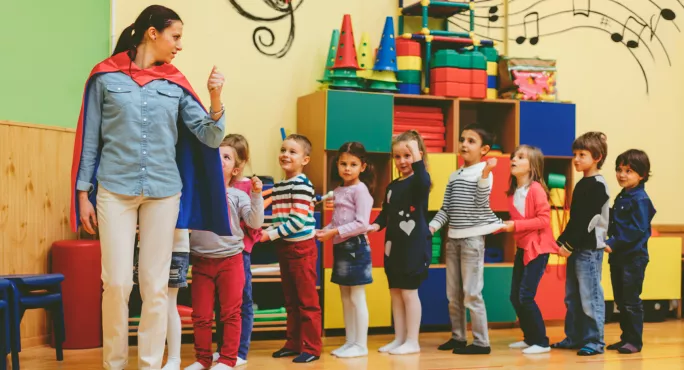- Home
- Report: how to teach social and emotional skills
Report: how to teach social and emotional skills

The Education Endowment Foundation (EFF) and Early Intervention Foundation (EIF) have released a new report today on how primary schools can best teach social and emotional learning (SEL).
Matt van Poortvliet, head of programmes at the EEF, explained that the joint publication offers schools guidance on getting the most from SEL, in a way that doesn’t conflict with other pressures and priorities.
He said: “I think most schools will be doing something related to this already but there will be huge variations on that.
“If it’s something mandated and forced, and not thought about, and teachers who deliver it haven’t really bought into it, it’s unlikely to be successful. But if it’s done purposefully and thoughtfully, and the teachers are prepared and engaged with content, it’s much more likely to have a positive effect.”
The report outlines a number of key aspects that schools should cover to deliver effective SEL:
1. Focus on five areas
The report highlights five distinct areas that form effective SEL:
Self-awareness: This is about giving children the ability to understand their emotions and reactions. This can be done by, for example, creating a “feelings board” in the classroom that pupils (and teachers) can use to articulate how they are feeling.
Pupils can even have a photo of themselves on the feelings board they can stick next to a certain emotion when they arrive in the morning.
Self-management: Children should be helped to process their feelings in a healthy way, particularly anger and frustration.
The report suggests ideas such as positive self-talk - learning to tell themselves “I will calm down” if they are feeling upset - or the Turtle Technique of crouching down and becoming small to take some time to breathe and think positive thoughts.
Social awareness: This is about developing empathy. The report suggests teachers get children to discuss why characters in books act a certain way, or to get children to describe their experiences from a certain time and swap these with others, who can then suggest how they would have reacted.
Relationship skills: Children need to be able to interact with peers and adults, and understand social situation. The report suggests discussing body language and attitude, getting children to explore what positive and negative communication looks like.
Decision making: This about getting children to consider the consequences of their actions. Teachers should set scenarios - simple ideas such as “you don’t have anyone to play with” - and discuss approaches to try to solve them. Is it fair? Is it safe? Might it upset someone?
This can help them develop an approach that considers “If…then”, based on how they might try a second idea if the first may lead to negative outcomes.
2. Integrate SEL into everyday teaching
The report says that schools should look to actively teach SEL skills but also demonstrate them whenever possible during the school day, both culturally and pedagogically.
If a teacher is faced with a piece of technology not working, for example, they can say aloud that they are frustrated but model staying calm, taking a deep breath, talking through the options and coming up with a solution.
SEL can also be built into lessons such as history and PE, by asking children to explore what it would have been like to be evacuee during Second World War or discussing how it feels to lose a game, for example.
3. Plan carefully
Schools need to ensure that integration of SEL teaching is carefully considered. This could involve running sample lessons before introducing a school-wide approach and researching existing approaches that could be adopted rather than starting from scratch.
Ultimately, schools need to have a clear curriculum of lessons, workbooks or manuals that teachers can refer to, as well as a series of resources and lesson plans.
4. Build a ‘Safe’ curriculum
Schools should adopt a sequenced, active, focused and explicit (Safe) curriculum. “Sequenced” SEL means lessons are coordinated and connected, while “active” is about giving children the chance to practice and master the new skills they are learning, such as through role play. “Focused” is about ensuring there is adequate time spent on each social and emotional skill, and “explicit” means each skill that a school wants to teach must be clearly identified.
5. Create a whole-school ethos
It’s vital to create a socially and emotionally inclusive environment built on trust and empathy. The report suggests schools do this by building SEL into school events, such as hosting assemblies devoted to emotional development, or having a means for SEL to be recognised and rewarded, perhaps through certificates, reward points or peer nominations.
6. Plan, support and monitor implementation
Finally, senior leadership teams must take ownership of the implementation of SEL skills teaching.
This includes establishing a team that shares leadership responsibility for SEL, reviewing school policies, involving parents in understanding what children are learning in SEL, and allowing all staff to engage in SEL planning and implementation.
Keep reading for just £1 per month
You've reached your limit of free articles this month. Subscribe for £1 per month for three months and get:
- Unlimited access to all Tes magazine content
- Exclusive subscriber-only stories
- Award-winning email newsletters



